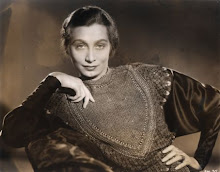
Decoration Day Parades in the 1940s
My grand uncle Bill was alive when I was a boy. He was my paternal grandfather’s brother. My father was named after him, as was my brother after my father. I remember grand uncle Bill reasonably well. (We called him “Uncle Bill”.)
He lived with my grandfather’s family -- a bachelor brother taken in somewhere along the way and watched over. His immediate family called him “Tootoo” because he occasionally went on “toots”, which was a word used for binges in those days. He drank infrequently, but when he did, the bout lasted for days.
Uncle Bill was usually unshaven, smelled of cigarettes, and often sat in a corner in a chair and complained about ill behaved children. However, like so many older forgotten men, he had a past. And that past was linked with Cuba. Uncle Bill was a Spanish American War veteran, a distant war even then. And I know virtually nothing of what he had done in that conflict.
I was a boy during World War II and lived in an apartment house one half block from the Grand Concourse in the Bronx, the borough’s major north-south artery. I was aged seven when the war began and ten when it ended. Living near the Concourse had one advantage: a proximity to its parades. And by far the best Bronx parade at that time was the rather large Decoration Day Parade, as it was then so called. The war had increased the parade’s size and significance I am sure. This was the early 1940s, our nation was at peril and the military was revered.
I remember those parades vividly and the excitement when we first heard the music from far away marching bands working their way up from the south Bronx on their way to the Veterans Hospital some forty blocks north. I remember that far away music hastening my pace to reach a place from which to watch the spectacle.
And I have a distinct memory of Uncle Bill marching with a small group of what seemed like very old men up the Grand Concourse in the Decoration Day Parade. The men were what remained of a small local group of Spanish American War veterans. They wore suits, I think, with appropriate medals pinned on and some sort of quasi-military headgear –- perhaps American Legion hats. And as Uncle Bill marched, he was far removed from the tired old man who sat in the corner for the rest of the year.
One might reflect on Uncle Bill walking with those men while another war was going on. They might have been remembering parades gone by. As now, I remember parades gone by. And Uncle Bill had a tale to tell I am sure, but it was not told to me or to anyone else of which I am aware. So time has washed away his story as the years have washed away Decoration Day and renamed it Memorial Day. And the size of, and the enthusiasm for, such parades -- in too many places, alas, has diminished.
A note on the photograph:
The photograph is from Flickr and is listed as “1940s - The Bronx, Grand Concourse, 4th of July Parade”, submitted by Straatis. But neither my wife nor I remember such a Bronx parade in 1940s. I suspect the photograph might be that of a Decoration Day Parade. (Google Maps shows us that the location is 169th Street.)





.jpg)

























